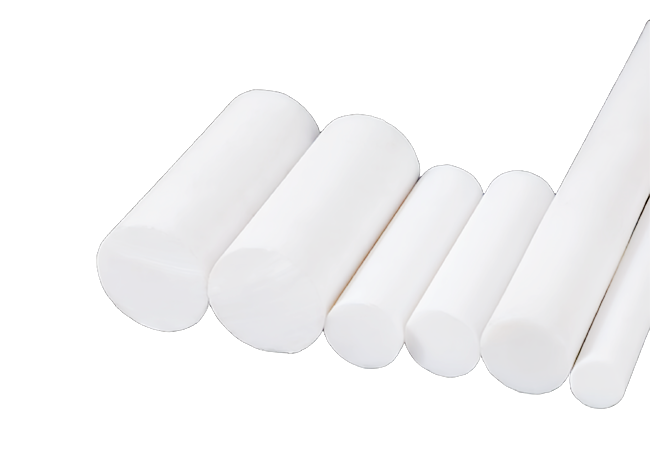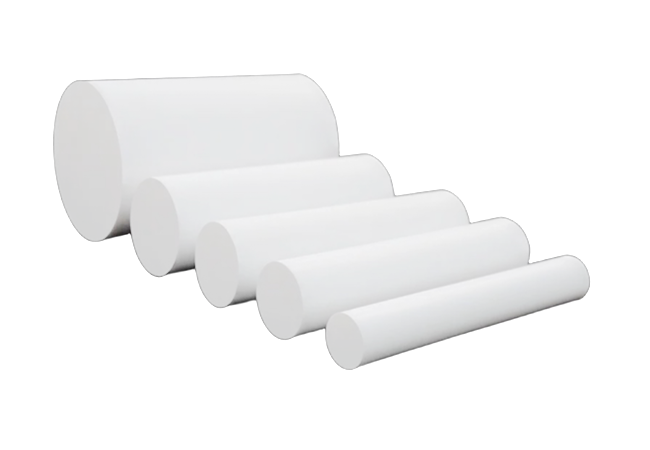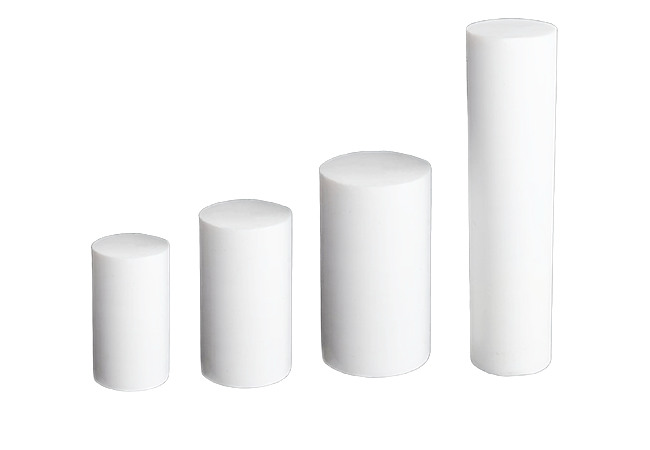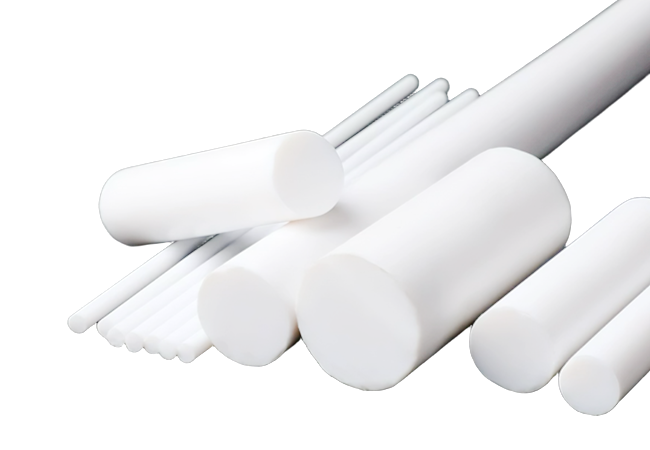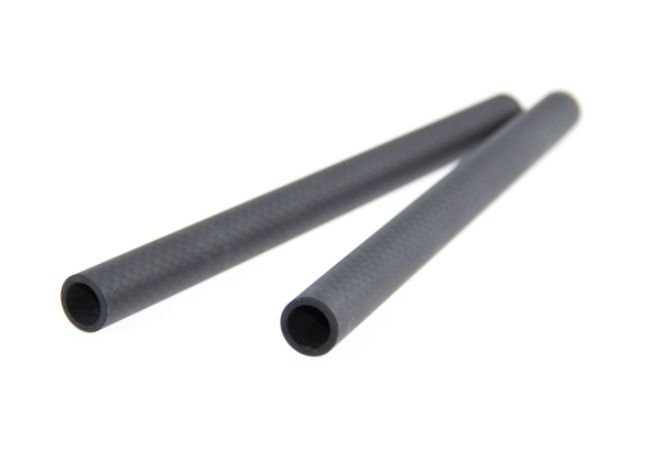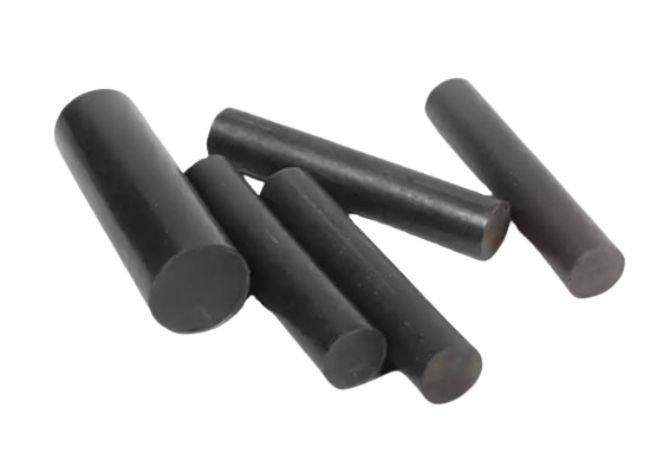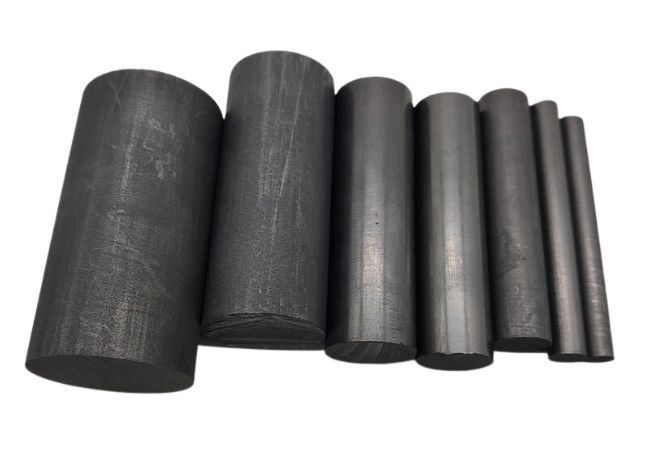Virgin PTFE Rod From Hansa
- Chemically inert – the pure fluorine-carbon bonds make virgin PTFE rods chemically unreactive.
- Wide operating temperature – this thermoplastic polymer is best for wide working temperature applications. The virgin PTFE temperature range is about -180°C to 260°C.
- Good electrical insulation property – virgin PTFE rods have high breakdown voltage. This is alongside high dielectric strength.
- Low coefficient of friction – the virgin Teflon rods exhibit low friction, non-stick property, and are generally slippery.
Features of Virgin PTFE Rods
Virgin PTFE rods, also called virgin Teflon rods are extruded or molded from pure polytetrafluoroethylene. The PTFE here is 100% pure without any recycled material. Consequently, these synthetic fluoropolymer rods have excellent physical and chemical properties.
The virgin PTFE rods are usually white, but there are custom color options upon request. Although there are extruded virgin PTFE rods, compression molding remains a popular technique for making most virgin Teflon rods.
In short, these virgin PTFE material properties make virgin Teflon rods the best engineering thermoplastic polymer known today.
Key Features of Virgin PTFE Rod

Coefficient of friction (COF) as low as 0.04, featuring a smooth surface with self-lubricating properties that eliminate the need for external lubricants.

Demonstrates favorable compressive and creep resistance at ambient temperatures, though may soften under elevated temperatures, suitable for low-stress applications.

Exhibits corrosion resistance capable of withstanding aggressive agents and the majority of chemical media (pH 0-14).

Operational range spans from -200°C to +260°C for sustained service, with short-term exposure tolerance up to 300°C.
Virgin PTFE Rods Options Available
Adding filler to Virgin PTFE Rods (Upon Request)
Fillers in PTFE improve certain inherent characteristics. For instance, you can add carbon, graphite, MoS2, peek, or grass fiber to improve virgin PTFE rods’ performance characteristics.
For example, graphite-filled virgin PTFE rods are known for extremely low coefficient of friction. While carbon-filled virgin PTFE rods have high compressive strength.
Virgin PTFE Molded Rod vs. Virgin PTFE Extruded Rods
For molded PTFE rods, you will use the compression molding technique followed by the sintering process to get a final product. On the other hand, for extruded PTFE rods, polymerized polytetrafluoroethylene is forced into an extruder using a plunger.

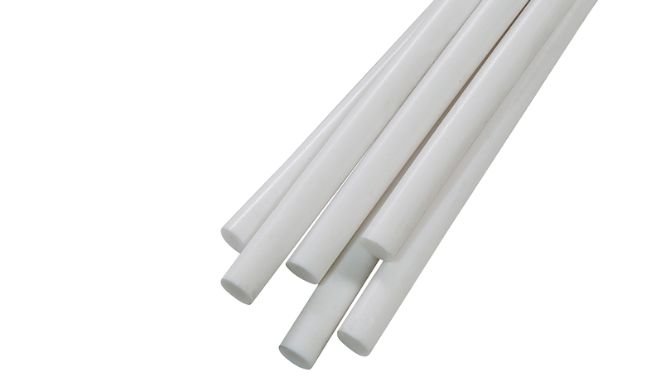
Application of Virgin PTFE Rod
Whether you choose virgin PTFE extruded rods or virgin PTFE molded rods, their applications tend to overlap. For example:
- Extruded virgin PTFE rods are popular in conveyor systems or function as tension rods in hydraulic systems.
- Molded virgin PTFE rods offer better insulation features in gas and water piping systems.
You can machine virgin PTFE rods to make gears, gaskets, bearings, shims, bushings, pump parts, etc.
Virgin PTFE Rods Options Available
Adding filler to Virgin PTFE Rods (Upon Request)
Fillers in PTFE improve certain inherent characteristics. For instance, you can add carbon, graphite, MoS2, peek, or grass fiber to improve virgin PTFE rods’ performance characteristics.
For example, graphite-filled virgin PTFE rods are known for extremely low coefficient of friction. While carbon-filled virgin PTFE rods have high compressive strength.
Virgin PTFE Molded Rod vs. Virgin PTFE Extruded Rods
For molded PTFE rods, you will use the compression molding technique followed by the sintering process to get a final product. On the other hand, for extruded PTFE rods, polymerized polytetrafluoroethylene is forced into an extruder using a plunger.
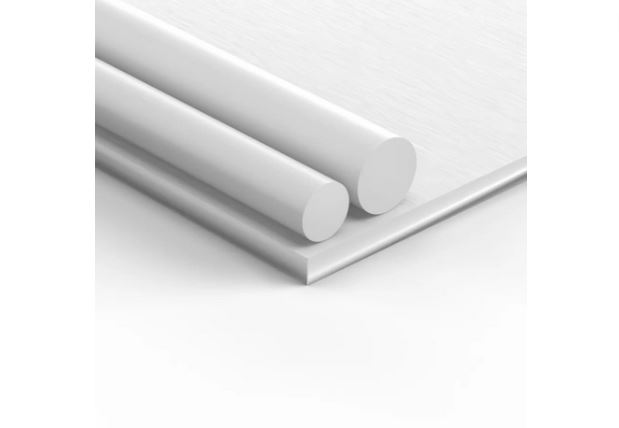
Production Process for PTFE Rods As Following Steps

Raw Material Specifications for PTFE Sheets;Primary resins sourced from Shandong Dongyue (China) and Daikin Industries (Japan), predominantly suspension-polymerized medium-grade formulations, compliant with FDA and REACH regulatory requirements.
Inventory Readiness & Packaging Workflow:We have a large number of qualified inventory products, can be shipped at any time to ensure that customers receive qualified products in the shortest and fastest time.
One-stop delivery: We have a stable transport fleet to deliver your goods to the freight port in time and safely.
Specifications Of PTFE Vigin Rod t From Hansa
- Type and specification
- Main Properties
| TYPES | Diameter(mm) | Length(mm) |
| Pressed Rod | 1-4mm | Produced under requirements |
| Extruded Rod | 3-600mm | Produced under requirements |
| Molded Rod | 12-1200mm | 100-300mm |
| Item | Unit | Value rang |
| Density | g/cm3 | 2.1-2.3 |
| Flexural Strength | Mpa | 11-14 |
| Tensile Strength | MPa | 21-28 |
| Friction Coefficient | / | 0.04 |
| Water Absorption | % | <19 |
| Dielectric Strength | KV/mm | 10 |
| Operating Temperature | ℃ | -1800-260 |
| Melting Temperature | ℃ | 325 |




